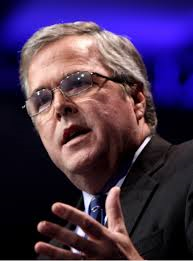The education plan released last week by Jeb Bush is the most sweeping of any of the Republican presidential candidates. Critics, supporters and other observers have seized on a similar theme: It recalls the policies he backed as governor of Florida, including expanded parental choice.

In some ways, they’re right. But Bush’s plan deserves attention from the educational choice movement, regardless of how this presidential campaign turns out, for a different reason: It’s one of the first serious proposals to overhaul federally funded education programs in a way that could give parents almost full control.
It would create a framework that could help make some of the newest, most hotly debated educational choice programs in the country work better for low-income parents. States would get new support for education savings accounts, which allow parents to pay for a range of educational expenses, from school tuition to textbooks and private tutoring.
One such program was created last year in Nevada, where even the staunchest supporters acknowledge new, nearly universal ESAs aren’t perfect. For one thing, they offer less than $6,000 to children with low incomes or special needs. For many parents, that won’t likely be enough to provide their children with a quality K-12 education — much less pay for preschool, or save for college.
Funding for Nevada’s education savings accounts was kept low, in part, because the program’s architects wanted to avoid hurting the funding for existing public schools.
Bush’s proposal would give a state like Nevada a new way to address those shortcomings, without cutting into its core public-school funding.
States would have more flexibility to decide how they use federal educational aid for poor families, and that money would be able to follow children to whatever educational option they choose.
Instead of using a convoluted formula to pass Title I funding through multiple layers of government and then trusting that each school district uses that money in ways that truly target and directly benefit low-income children, a state like Nevada could deposit that money right into a parent’s ESA. Parents would be able to afford more and better services for their child, and they would be more likely to save some money for college.
For low-income families, tax-deductible charitable contributions could supplement other funding for the “lifelong learning” accounts — which Bush envisions as a replacement for existing “529” college savings plans.
There would also be changes for younger students. Low-income parents of preschool-age children could receive $2,500 for their education savings accounts. In a state like Florida, they could use this money to top off their Voluntary Pre-K scholarships, and if there was money left over after paying for preschool, they could start saving for educational needs that arise when their children got older.
Right now, Nevada is the only state where almost any child can qualify for an ESA, but other states, like Florida and Arizona, offer them to select populations, like students with special needs, and legislatures in at least eight more states could consider creating them this year. ESAs are still in their infancy, and debates rage among school choice supporters about which students should qualify and how education providers that accept ESAs should be regulated. Bush’s plan would allow those debates to play out, state by state. The federal government’s role would be to help them put more money in the hands of low-income families, and to ensure parents can get meaningful information about the quality of schools they choose.
Other Republican presidential contenders have endorsed private school choice. Sen. Marco Rubio has championed a tax credit program that could expand Florida-style scholarships for low-income students all over the country, while Sen. Ted Cruz wants ESAs in the nation’s capital.
Bush’s plan is unique because it anticipates a future in which more parents all over the country will have direct control over their children’s education funding, and proposes an infrastructure that would help the system work better the parents with the least financial resources.


